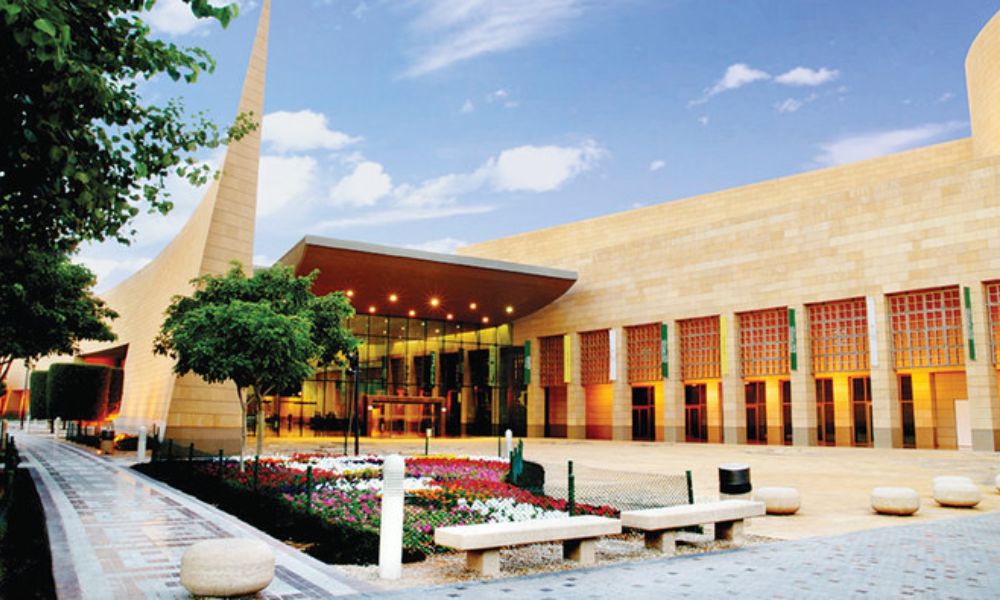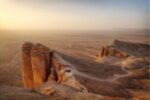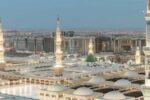
Nestled in the heart of Riyadh, the National Museum of Saudi Arabia stands as a beacon of cultural heritage and historical preservation. Established in 1999 as part of the King Abdulaziz Historical Center, this museum offers an immersive experience into the rich tapestry of the Arabian Peninsula’s past.
Architectural Marvel
Designed by the renowned architect Raymond Moriyama, the museum’s architecture draws inspiration from the natural landscapes of Saudi Arabia. The building’s façade mirrors the soft contours of sand dunes, creating a harmonious blend between structure and environment. Covering an expansive area of 28,000 square meters, the museum’s design emphasizes both aesthetic appeal and functional space for exhibitions.
Curated Exhibitions
The museum houses eight meticulously curated halls, each narrating a distinct chapter of the region’s history:
Man and the Universe: This hall delves into the geological and cosmic aspects of the Arabian Peninsula, featuring interactive displays on the solar system, plate tectonics, and ancient fossils, including a Platybelodon skeleton.
Arabian Kingdoms: Showcasing civilizations from the 5th millennium BC to 700 AD, this section highlights the Obaid, Dilmun, Thamud, and Nabatean cultures, among others.
Pre-Islamic Era (Jahiliyyah): Exploring the period before Islam’s emergence, this hall presents artifacts and narratives that depict the social and cultural dynamics of pre-Islamic Arabia.
The Prophet’s Mission: Dedicated to Prophet Muhammad’s life, this gallery traces his lineage, early life, and the pivotal moments leading to the spread of Islam.
Islam and the Arabian Peninsula: This section chronicles the rise of Islamic civilization, from the Prophet’s migration to Medina to the Ottoman era, emphasizing the region’s transformation under Islamic influence.
First and Second Saudi States: Detailing the establishment and evolution of the Saudi states, visitors can explore models and exhibits that narrate the political and cultural developments of these periods.
Unification of the Kingdom: Highlighting King Abdulaziz Al-Saud’s efforts in unifying the nation, this hall presents artifacts and stories from the early 20th century.
Hajj and the Two Holy Mosques: Focusing on the significance of Hajj and the sacred mosques in Mecca and Medina, this gallery features detailed models and historical accounts of these religious sites.
Educational Approach
The museum adopts a didactic approach, emphasizing contextual understanding over isolated artifacts. Through life-size dioramas, replicas, and interactive displays, visitors gain a comprehensive insight into the cultural and historical narratives of the region.
Visitor Information
Open to the public, the National Museum offers guided tours, educational programs, and special exhibitions throughout the year. Its central location in Riyadh makes it accessible for both locals and tourists eager to delve into Saudi Arabia’s rich heritage.
In essence, the National Museum of Saudi Arabia serves as a custodian of the nation’s history, offering a window into the past while educating and inspiring future generations
Nearest Metro Station
For convenient access, the National Museum Metro Station is the closest stop. This station serves both the Blue Line (Line 1) and the Green Line (Line 5) of the Riyadh Metro, making it easily reachable from various parts of the city.
The station is strategically located adjacent to the King Abdulaziz Historical Center, providing direct access to the museum and surrounding cultural landmarks.
Opening Hours
The museum’s operating hours vary throughout the week:
- Monday to Wednesday: 9:00 AM – 7:00 PM
- Thursday: 9:00 AM – 10:00 PM
- Friday: 2:00 PM – 10:00 PM
- Saturday: 9:00 AM – 7:00 PM
- Sunday: Closed
These timings ensure visitors have ample opportunity to explore the museum’s extensive exhibits.






It’s fascinating to see how Madinah has integrated urban planning and public health to create such a clean and healthy city. The collaboration between Taibah University and various local organizations seems to be a big factor in achieving the WHO’s criteria.